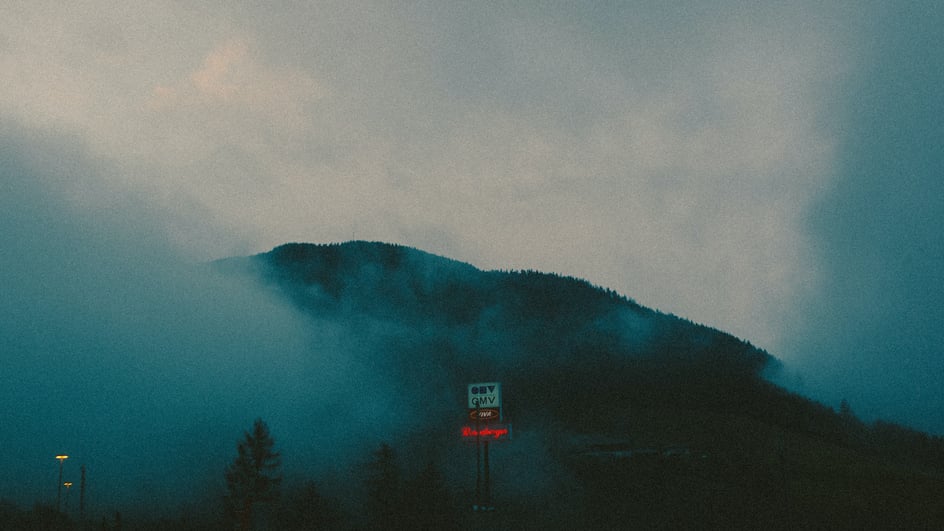
Nov 9, 2020
Film grain used to be a natural part of filmmaking. That textured, “noisy” look of old movies was a side effect of shooting and recording onto celluloid film. It was a natural part of the process, and so it became something people automatically associated with watching a movie.
Flashforward to 2020. With the exception of a few “old-fashioned” directors, everyone shoots video digitally. That means the only way to get film grain — and capture that kind of traditional cinematic look — is to add it in post-production.
So, yeah. Filmmakers do extra work to add graininess into footage. It’s a strange thing to say, but once you see the visual differences, you’ll get why film grain matters for video production, and why we go out of our way to do it.
Why Film Grain Feels So Old
Usually, a grainy image is a bad thing. It might look like an accident, or like the byproduct of an inexperienced person behind the camera.
But because film grain is something we associate with a classic cinematic style, adding visual noise (in moderation) is a way for creators to develop a certain visual tone for their videos. And anything that helps you achieve your vision for a project is something worth learning about.
A thorough explanation of traditional film grain gets scientific pretty quickly, so I won’t bore you with every single detail. Let’s just say that film grain is the result of imperfections and small particles that appear during the development of analog film.
Obviously the move to digital film did away with film grain, at least as a natural byproduct of the development process. But that certainly doesn’t mean that visual noise has gone away. (In fact, even Adobe offers tutorials on how to add it when editing digital photos.)
It's possible to create film grain on pretty much any camera. (Here's a list of great video production cameras, if you're curious.) You'll see film grain in a lot of low-lighting photos, for example. And higher ISOs have a higher light sensitivity, so adjusting that setting tends to produce a grainier image.
You can also add film grain during post-production. I’ll go into that more in a later section, but for now, just remember that you can pretty easily achieve this look with plugins or film grain overlays. And you can do it right in your preferred editing program.
Why Film Grain Matters
So, now we get to the big question: Why does film grain matter?
The obvious answer is that it makes a video have a classic feel. (And yes, it’s strange that something that used to be an accident now gives the impression of higher production values, but ¯\_(ツ)_/¯ .)
The less obvious reason, however, is because film grain has a particular sense of emotion tied to it. And that is the real reason why film grain matters for content creators.
There’s a level of grittiness associated with film grain. If used properly, that kind of noise makes a video feel more natural, almost like that footage is untouched and unedited. It makes the film more believable, which helps draw the audience into the reality you are trying to create in your video.
And yes, historical dramas often incorporate film grain. This kind of visual “roughness” makes sense in war movies, but these directors are also trying to make audiences feel like they’ve been transported back in time. Recreating the associated visual style helps sell that.
There’s also an instinctive, unconscious nostalgia that film grain creates inside of us. Film grain makes a picture or video feel almost like a shared memory. Evoking that sort of intimacy makes every emotion hit harder, which gives you more control over the way your video tells its story.
Why Filmmakers Use Film Grain
16mm film (or “Super 16”) has a pretty distinct look. More importantly, it’s also got a very nostalgic and classic quality to it. Video shot this way has a style that makes viewers feel something, so of course getting a film grain overlay to replicate that look brings the same vibe to digital video.
This short film was shot in 2019 on 16mm film. (Watch for the film grain — you can’t miss it during the low-level lighting shots.)
A lot of the visuals here are borderline breathtaking. Everything feels like a time capsule, a documentary from the ‘70s or ‘80s rather than a recent student project. But that’s part of the magic of analog film, and it’s why adding film grain is such a powerful storytelling tool.
Here’s a side-by-side comparison using an actual blockster: Steve Jobs.
The essay component of this project isn’t the interesting part. Notice the visual changes as the film moves between different time periods (and the appropriate film formats). And even while the film is still directed and shot the same way, each piece of the movie feels so different because those telltale 16mm and 35mm pieces are gone.
Steve Jobs is also a near-perfect illustration of how different formats can help with storytelling, lining up visual changes with both the passage of time and the “polish” that Apple (and Jobs) developed over the years.
Why Film Grain Is So Popular
Clearly film grain is cool. It’s something that you can add pretty easily. In addition to renting analog equipment (which can be outrageously expensive), you can find thousands of tutorials about different methods to add film grain to your next project.
Pulling off the 35mm or 8mm look is easy with digital filters or by finding a film grain overlay that you like. (And yes, there are a lot of free overlays available too.) You can even jump into After Effects and use different filters to add it to your footage.
The point is that film grain matters. It’s a unique tool for steering an audience’s emotion, which makes it a great storytelling technique. Because while every filmmaker wants their content to look great, presenting it in an impactful way might be the highest achievement for a storyteller.
And film grain can help you sprinkle that magic into your films, music videos, or other projects like it’s pixie dust (rather than the metallic silver particles that created that look in the first place).
